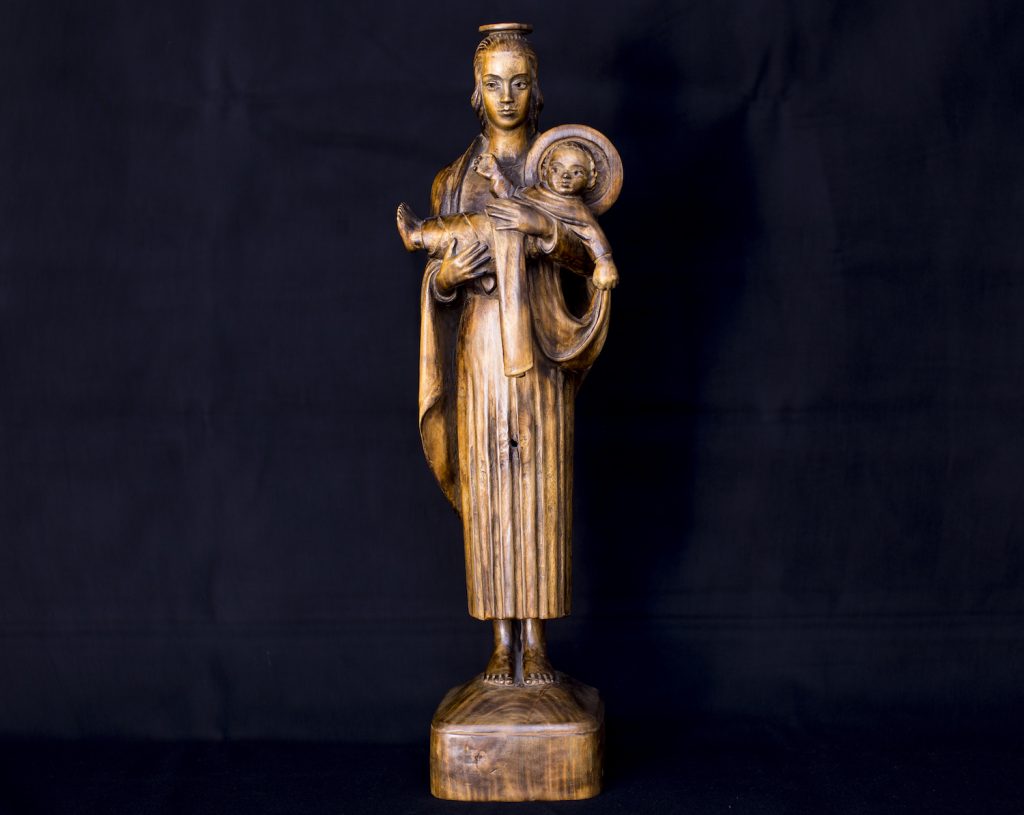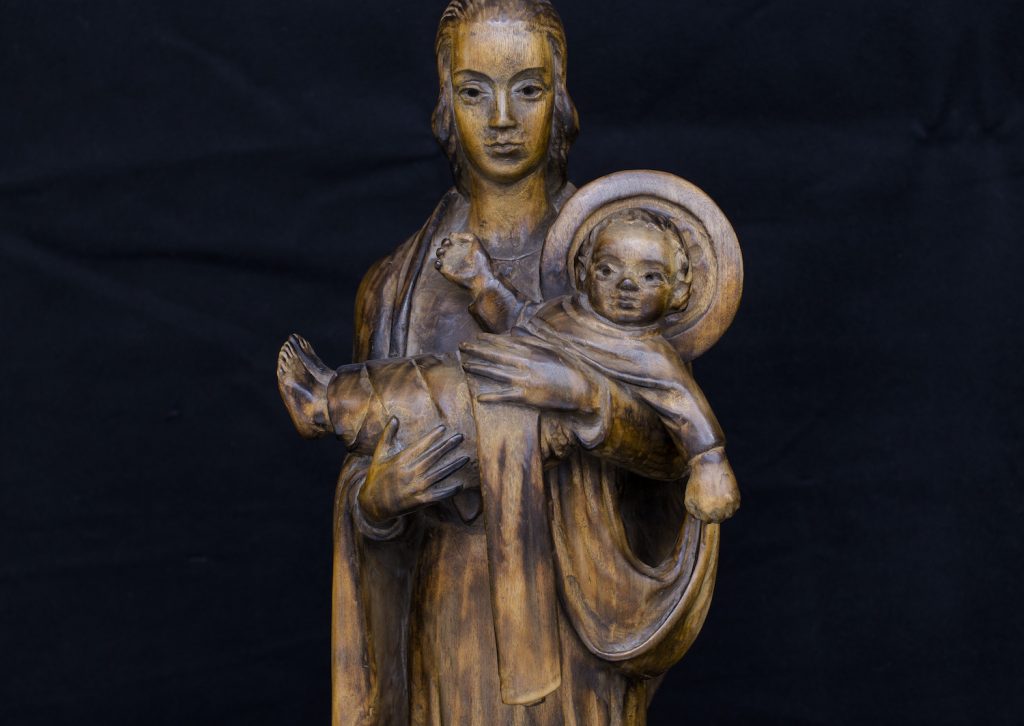Hanne Autere’s Madonna and Child sculptures
DECEMBER 2017
In the ecclesiastic art, Madonna and Child themed artworks have been common during the Middle Ages dominated by the Roman Catholic Church, and later mainly in Roman Catholic countries only. In Mänttä, however, there are two Madonna and Child themed wooden sculptures. One is on show on the pulpit banister in Mänttä church and the other is included in the Gösta Serlachius Fine Arts Foundation’s collections.
Hannes Autere (1888–1967), to whom the theme of Madonna and Child was very dear, has created both the sculptures. In 1927, architect W. G. Palmqvist, the designer of Mänttä church had recommended Autere as the person to carve the decorative artworks of the church. It was the first church of Mänttä, for Mänttä congregation had been established as late as in 1922. G. A. Serlachius Company donated the church to the congregation to celebrate the 60 anniversary of the mill in 1928.
Autere created altogether 34 wooden reliefs or sculptures for the church of Mänttä. As last of them, the sculpture Madonna and Child, was completed as late as in 1933. The piece belonging to the Foundation’s art collection has been dated to years 1933–1934. The artist has probably given it as a gift to celebrate the 60th anniversary of Gösta Serlachius, who had commissioned the construction of the church.
In the sculpture located in the church, Autere has depicted the Madonna as a popular young woman with a long hair and without the halo around her head. The girl wears rope sandals and a dress reaching to her ankles. The piece comprised in the collections of Gösta Serlachius Fine Arts Foundation is more modern in style. In it, Mary is standing barefoot in a column-like position with a halo over her head. Instead of a newborn baby the woman is holding in her lap about a two-year-old boy who gestures alertly.
The patina on the Foundation’s sculpture is smooth and shiny. It has been accomplished so that the surface of the sculpture has been burned with a blowtorch and then polished with a linen wad so long that no soot came off of it anymore. The artist’s purpose was to make material look like nut tree although it really is birch.
Hannes Autere mastered perfectly all different wood species and treatments of wood material as well as peasant building tradition. He had family ties to Petäjävesi, which is renowned for its pearl of peasant building tradition, the 18th-century wooden church and its popular wood decorations that have been included in UNESCO’s List of World Heritage Sites in Finland
The artist had adopted the last name Autere as late as in 1913. Prior to that he used the surname Piesanen, derived from the name of the farm Piesala that his father Taavetti had owned in Petäjävesi. If Gösta Serlachius and the artist had met earlier in their lives, Hannes Autere may have had a more dominant role in designing the Mänttä church.
The plans for Mänttä church were already initiated in 1927, when Serlachius commissioned Autere to decorate the church. Serlachius was later dwelling over the fact that the church would have been different, if Autere had taken part in the project at an earlier stage. We will never know, weather Mänttä would have received a wooden church. An 18th century wooden church closest to Mänttä was in Kuorevesi. Originally, Serlachius had envisioned that an 18th century wooden church would be transferred to Mänttä either from Keuruu or Petäjävesi. The transfer had to be relinquished because the two parishes were not inclined to give up on their churches. Their valued churches were not for sale.
Marjo-Riitta Simpanen
Curator, Art historian



